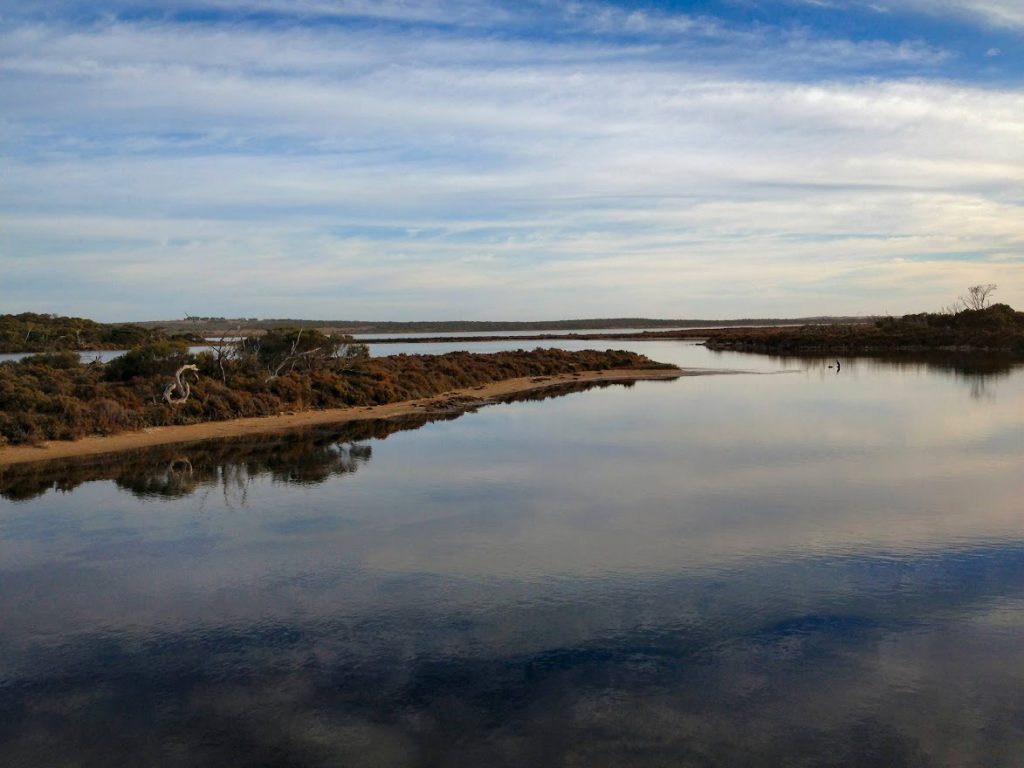
View across the basin of the marine spring that feeds Seagull Lake on the Eyre Peninsula in South Australia. Marine groundwater-augmented salt lakes are found all along the west coast of the peninsula.
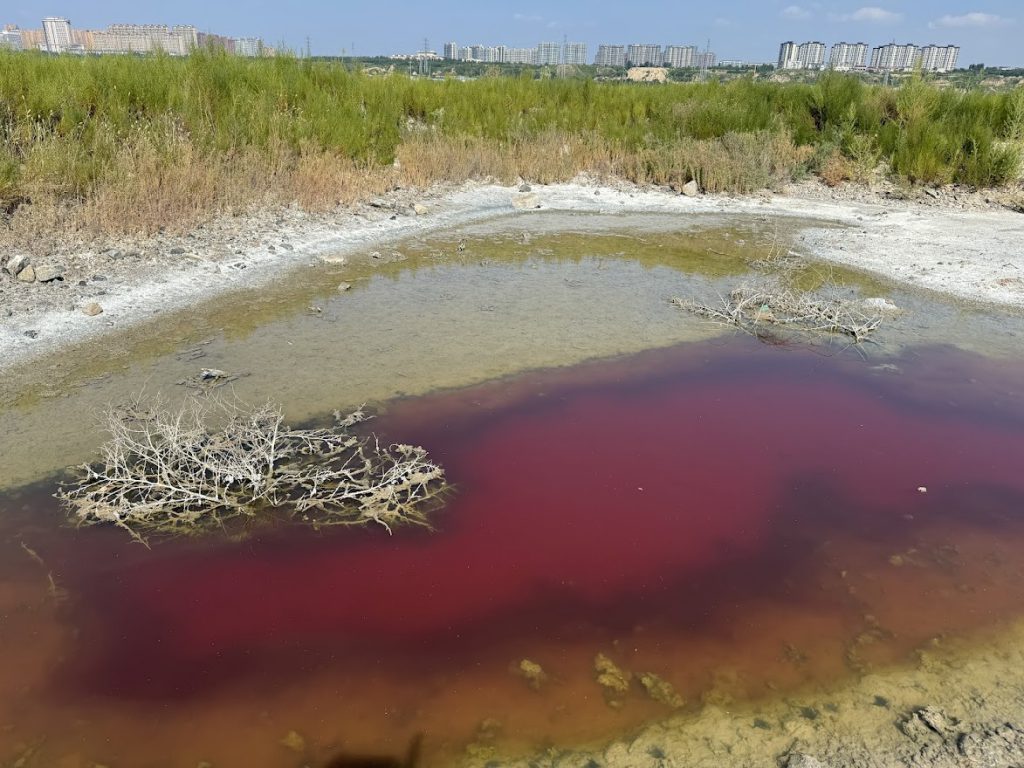
Captivating image of Yuncheng Salt Lake’s unique heart-shaped pond, displaying a striking dual-hue of yellow and purple amidst its 220 g/L salinity, framed by sparkling white salt crystals, a testament to nature’s artistry. Two withered plants, one in each hue, adorned with salt encrustations, symbolize the passage of time and the awe-inspiring craftsmanship inherent in nature.

Cranes spend the winter in the Gallocanta lagoon in Aragón, NE Spain, a 14 square kilometer shallow saline endorheic lagoon. Over 110,000 cranes have been seen on a single day! Aside from cranes, 220 bird species visit it regularly, making it a hotspot for birdwatchers. At 1,100 m asl, the area is at the center of Spain’s “cold triangle”, with temperatures of -20ºC not being uncommon, although snowfall is rare.

The photograph captures the quiet resilience of reeds thriving in the challenging environment of a salt lake on the Tibetan plateau. Despite the harsh conditions, with saline waters and alkaline soils, these delicate plants stand tall, swaying gently in the breeze. Their ability to adapt and flourish in such extremes symbolizes nature’s remarkable capacity for survival and harmony. The reeds, seemingly fragile, whisper a story of endurance, embodying the strength found in adaptability. This scene invites us to reflect on the beauty of resilience in both nature and life.
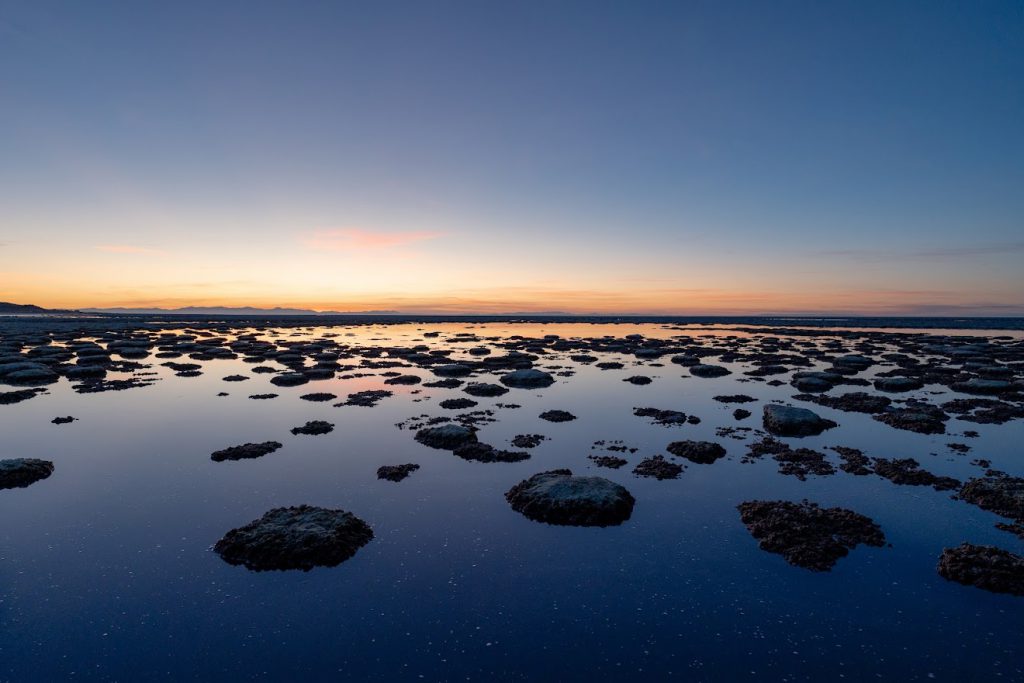
Exposed microbialites reaching toward the heavens from the waters of White Rock Bay, Antelope Island, Great Salt Lake, Utah.
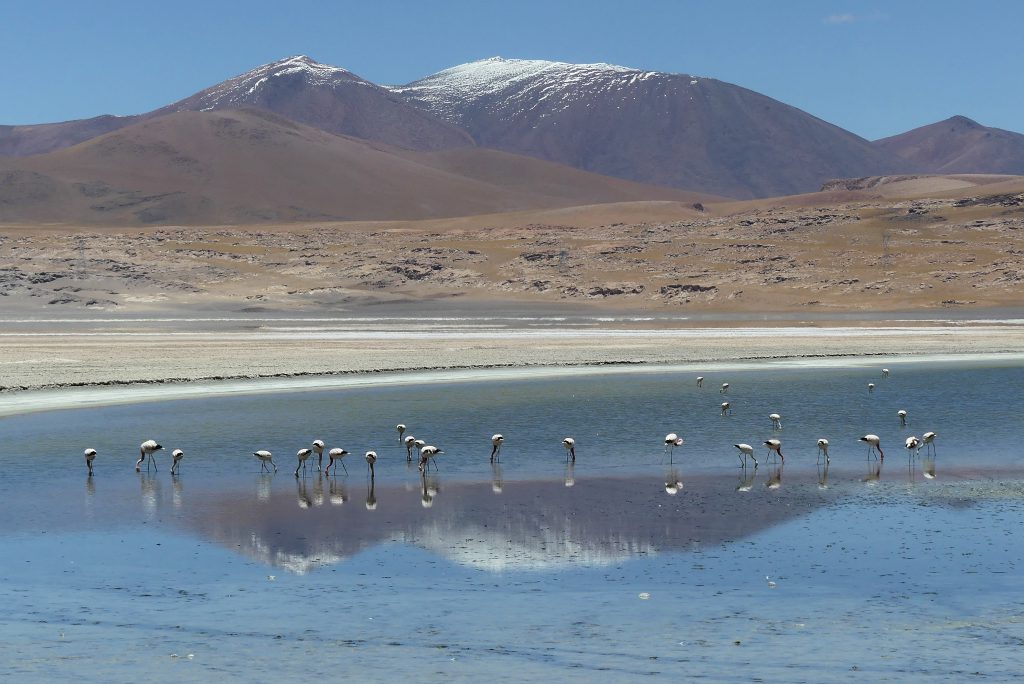
In the arid expanses of the Atacama Desert (Chile), “Salar el Laco” mirrors the snow-capped volcano “Cerro el Laco”, while a flock of andean flamingos (Phoenicocaparrus andinus) feed on the microorganisms and invertebrates that inhabit the salar.
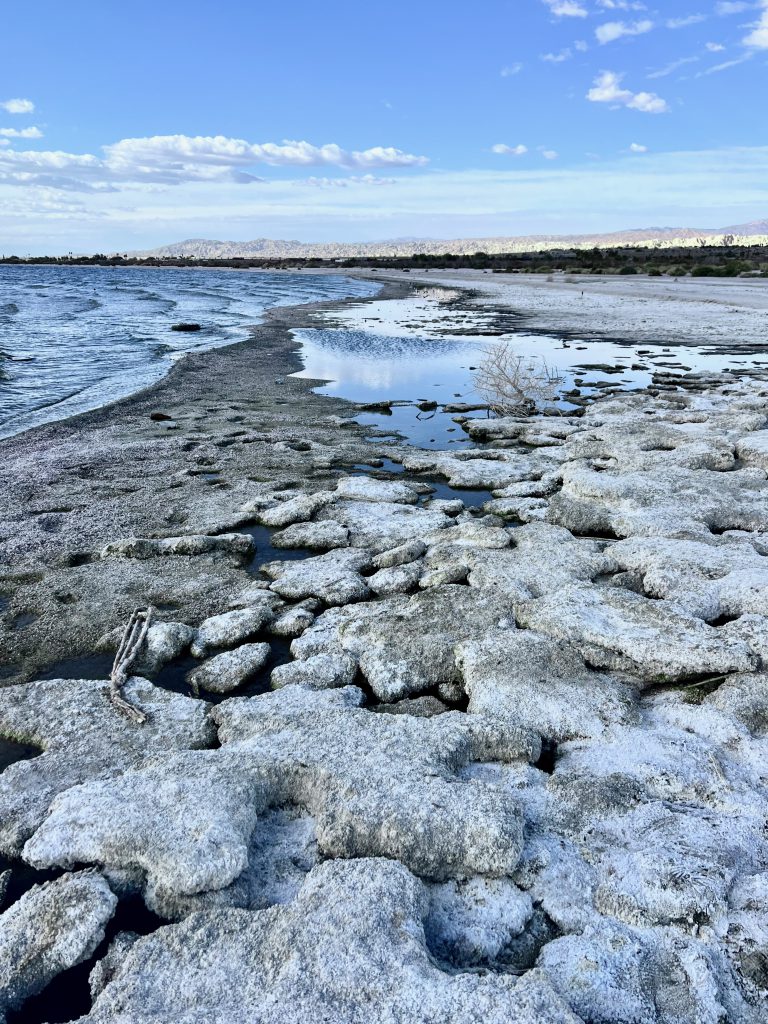
This striking image captures the complex and contrasting ecosystem of the Salton Sea, California’s largest lake. In the foreground, energetic waves lap at the shore, demonstrating the lake’s continued vitality despite its challenges. These waves contrast sharply with the adjacent dead panne – evidence of the sea’s receding water levels. At the forefront are blobs of precipitated gypsum crusts, their white crystalline structures a testament to the lake’s high mineral content and ongoing evaporation. These gypsum formations, created as the lake’s hypersaline and sulfate-rich waters recede and concentrate, add an otherworldly element to the scene. This single shot encapsulates the Salton Sea’s current state: a body of water still alive and dynamic yet surrounded by signs of environmental stress and change. It visually represents the ongoing struggle between the lake’s natural processes and the impacts of human intervention and climate change, highlighting the urgent need for conservation and management efforts in this unique and fragile ecosystem.
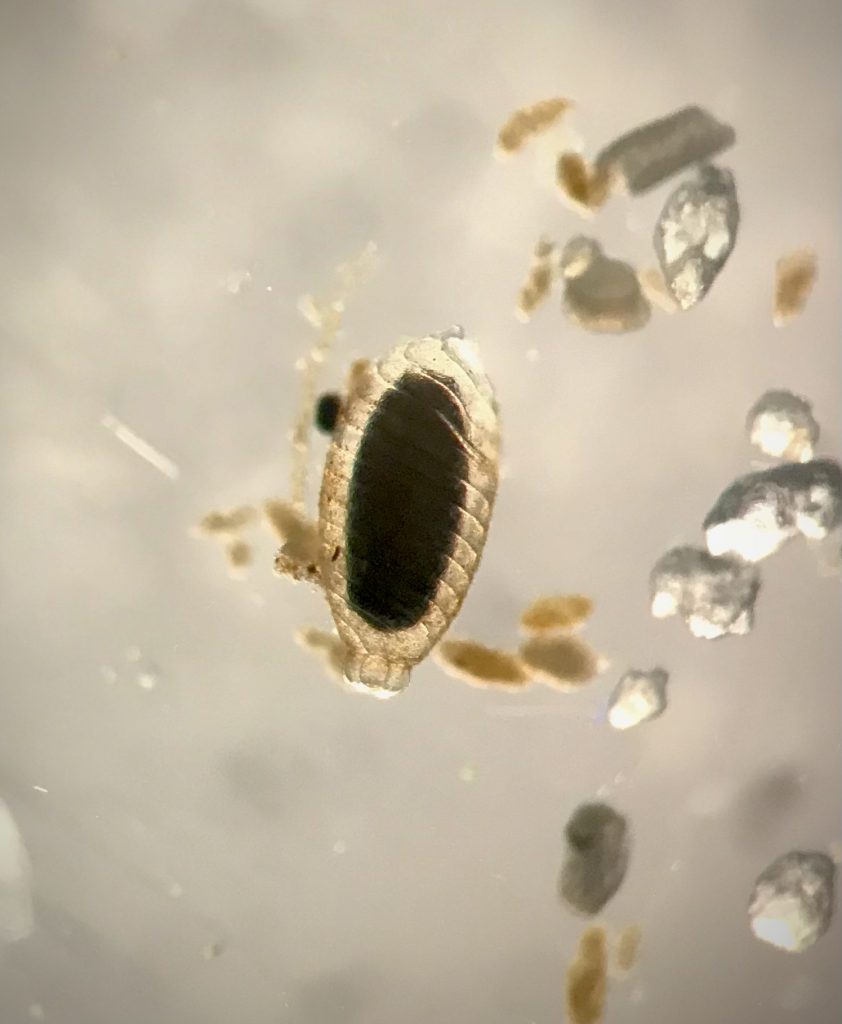
Saline lakes and lagoons are so expansive, that the observer often fails to realise that these waterscapes are like fractals, ever more complex and intricate, at smaller and smaller scales. Viewed under a microscope, the sands beneath our feet are often full of life, made up of the glass cases of diatoms, minute molluscs and in this case, the membrane and calcium carbonate coated spores of charophytes.
